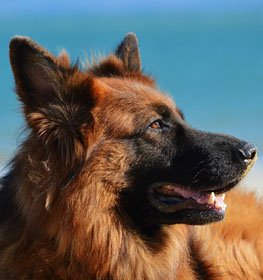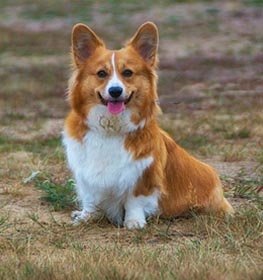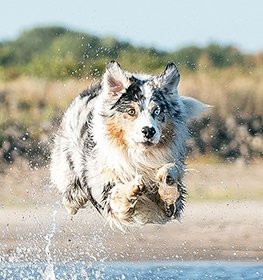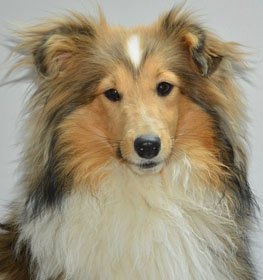Afghan Shepherd Information & Dog Breed Facts
Collection of all the general dog breed info about Afghan Shepherd so you can get to know the breed more.
| Group | Pastoral / Herding Dogs |
|---|---|
| Popularity Rank | 489 |
| Reviews | 1 |
| User Ratings | |
|
Compare the Afghan Shepherd With Other Dogs
Select at least one dog breed to make the comparsion. | |
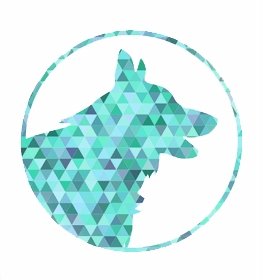 | |
| Origin | |
|
Common Names & Aliases
What other names is an Afghan Shepherd known by? Discover all traditional, regional and informal names used for this breed. | De Kochyano SpaiJangi SpaiSage JangiSage KuchiKuchi Dog |
|---|---|
|
Breed Classification
What type of dog breed is an Afghan Shepherd? Learn about its genetic classification and breeding category. | Purebred |
|
Size Classification
What size category is an Afghan Shepherd? Learn how big the Afghan Shepherd breed typically grows. | Large |
|---|---|
|
Weight Statistics
How much does an Afghan Shepherd weigh? Discover typical weight ranges for adult males and females of the Afghan Shepherd breed. | Male: 88-176 lbs (40-80 kg), Female: 84-120 lbs (38-54 kg) |
|
Average Weight
What is the average weight of an Afghan Shepherd? | Male: 132 lbs (60 kg), Female: 102 lbs (46 kg) |
|
Height
How tall is the Afghan Shepherd? Afghan Shepherd height: | Male: 28-35 inches (71-89 cm), Female: 27-32 inches (69-81 cm) |
|
Average Height
What is the average height of an Afghan Shepherd? | Male: 31,5 inches (80 cm), Female: 29,5 inches (75 cm) |
|
Price Range
How much does an Afghan Shepherd puppy cost? Find current market prices and factors affecting Afghan Shepherd costs. | $500-$600 If you choose to purchase the Afghan Shepherd, you should know that the mentioned amount of money is an average of the collected data from breeders’ sites and puppy finder places. If you have a Afghan Shepherd for sale, please advertise it on a reliable website to make sure the Afghan Shepherd gets to a happy place. |
|---|---|
|
Availability
How easy is it to get a Afghan Shepherd? How many Afghan Shepherd are there in the world? | Rare: You may rarely see each other in everyday life, but you might catch a glimpse of each other at dog shows. There are very few of them, and there have been times when they have almost drifted to the brink of extinction, so few are left. |
|
Intelligence Rating
How intelligent is an Afghan Shepherd? Discover the Afghan Shepherd's intelligence ranking and learning capabilities. | Low: The Afghan Shepherd is one of the dog breeds that have the lowest degree of obedience intelligence. You need to work hard if you want to impress people with these dog tricks and commands. They understand and memorize new commands in 80-100 repetitions, and obey the first command 25% of the time or better. |
|---|---|
|
Training Difficulty
How easy is it to train an Afghan Shepherd? Learn about the Afghan Shepherd's trainability and response to training methods. | Afghan Shepherd dogs are quite easy to train. Sometimes they can be challenging, but if you're consistent in teaching new commands they will obey for sure. |
|
Watchdog Rating
How good is an Afghan Shepherd as a watchdog? Learn about the Afghan Shepherd's alertness and guarding instincts. | Afghan Shepherd dogs are not the best choice if you want a good watchdog. They aren't territorial and protective about their property, so they won't alert you if they sense something different. |
|
Territorial Protection
Is an Afghan Shepherd protective of its territory? Learn about the Afghan Shepherd's guarding instincts and behavior. | Afghan Shepherd dogs are extremely protective guard dogs. This breed doesn't hesitate to protect its territory so the Afghan Shepherd can be a good choice if you want an excellent guard dog. Keep calm and the Afghan Shepherd will take care of unwanted people or animals. |
|
Personality Traits
What personality does an Afghan Shepherd have? Learn about characteristic Afghan Shepherd temperament and behavior traits. | AloofDignifiedIndependentClownishHappy |
|---|---|
|
Sensitivity Level
How sensitive are they? Afghan Shepherd sensitivity: | Sensitive: Afghan Shepherd dogs don't like an irregular daily routine, noisy household, and frequent guest visits.
This breed's emotional level reflects their owner's feelings and they don't handle punishments well. |
|
Affection Level
How affectionate are they? Is an Afghan Shepherd a good family dog? | High: Afghan Shepherd dogs are genuinely loyal, soft and gentle, loving, and affectionate dogs toward their handlers. They enjoy quality time with their owners despite the activity and are considered great therapy dogs for those in need. This breed responds strongly to their handler's emotions because they bond closely. Their happiness is your happiness. |
|
Social Needs
How much social interaction does the De Kochyano Spai need? Afghan Shepherd social needs: | Afghan Shepherd dogs need for social interaction is average. This breed likes being around people or other animals, but they don't mind being left alone for a few hours either. |
|
Impulse to Wander or Roam
How likely is the Afghan Shepherd to run away? Does this breed explore or wander a lot? Does Afghan Shepherd roam? | Afghan Shepherd dogs have high wanderlust potential, which means that this breed has a strong desire for exploring the world. Safer to walk them on a leash unless you teach them how to get back to you on command. This breed is also able to cause damage to your fence. |
|
Prey Drive
Do this canine have a strong prey drive? Does Afghan Shepherd have high prey drive? | Afghan Shepherd dogs have a high impulse to chase and catch something. Cats or any other small animals are in danger. It's a natural instinct, doesn't necessarily mean that Afghan Shepherd dogs are aggressive. Better to keep this breed on a leash. |
|
Barking Frequency
Does an Afghan Shepherd bark a lot? Learn about typical Afghan Shepherd vocalization patterns and triggers. | Average: The Afghan Shepherd barks occasionally. They can change their barks depending on their emotional level and what they're trying to say. Different barks could mean the same and the same barks could have different meanings.
Top reasons for barking: protection, alarm, fear, boredom, attention-seeking, greeting, separation anxiety, compulsive barking. |
|---|---|
|
Playful Nature
How playful is an Afghan Shepherd? Understand the typical play drive and energy level of the Afghan Shepherd breed. | The Afghan Shepherd is a playful breed. Excited barking and sometimes nipping will alert you to play. |
|
Apartment Adaptability
Can an Afghan Shepherd live in an apartment? Learn about the Afghan Shepherd's suitability for apartment living. | Not an apartment-friendly dog the Afghan Shepherd breed. If you don't have a garden, think carefully about your decision, keeping Afghan Shepherd indoors can cause a lot of problems. |
|
Lifestyle Adaptability
How adaptable is an Afghan Shepherd to lifestyle changes? Learn about the Afghan Shepherd's flexibility to new situations. | Average: Afghan Shepherd dogs adapt to lifestyle changes and different living environments quite okay usually. |
|---|---|
|
Alone Time Tolerance
Can an Afghan Shepherd be left alone? Learn about the Afghan Shepherd's tolerance to solitude. | Just like every puppy, they are prone to panic, cry, bark, whine when they left alone by their owner. With proper socialization and quality time with the dog can solve this problem. |
|
Bite Risk Assessment
What is an Afghan Shepherd biting potential? Learn about the Afghan Shepherd's bite risk factors. | Low 🔽 The Afghan Shepherd has a low chance of biting somebody. Top reasons for dog bite: protection, pain, excitement, herding instinct, being provoked. (Data based on the available online bite statistics.) |
|---|---|
|
Mouthing Tendency
Is an Afghan Shepherd mouthy? Learn about the Afghan Shepherd's tendency to use mouth during play. | Afghan Shepherd dogs have an average tendency to nip, chew, playbite, or herd people. It's a common habit during puppyhood, not aggressive behavior. These "bites" don't hurt, but Afghan Shepherd dogs need to be taught a good attitude. |
|
Bite Strength Rating
How strong is an Afghan Shepherd bite? Learn about the Afghan Shepherd's bite force measured in PSI. | Between 200 and 400 PSI ⏺ Afghan Shepherd bite force: Ordinary. Bite force Afghan Shepherd measurements typically fall within the range of 200 to 400 PSI. The bite force of an Afghan Shepherd is considered ordinary when compared to other dog breeds, but it is still quite powerful. This Afghan Shepherd bite force PSI can cause bite wounds. Afghan Shepherd bite PSI is not something that should be feared if the dog is well-trained and managed. To avoid any issues, it's essential to learn how to train an Afghan Shepherd puppy not to bite from an early age.
The Afghan Shepherd, and many others, have a fearsome presence because they have significant jaw strength, so it is important not to anger the dog and have it around strangers until it is fully trained. However, they are usually quite calm and good companions, they work well in families and are easy to care for. In conclusion, while the Afghan Shepherd bite force is certainly an interesting aspect of the breed, it is important not to let it overshadow the many other reasons why these dogs are so loved and respected. With proper training and socialization, an Afghan Shepherd can be a loyal and protective companion for your family. |
|
Average Lifespan
How long does an Afghan Shepherd live? Learn about the typical lifespan of the Afghan Shepherd breed. | 11-13 years The average lifespan of Afghan Shepherd: 12 years |
|---|---|
|
Climate Tolerance
How well does an Afghan Shepherd handle different weather? Learn about the Afghan Shepherd's climate adaptability. | Tolerates warm and cold weather Dogs that tolerate hot and cold weather are typically those that have a double coat of fur. Dogs with a double coat of fur have a layer of fur that insulates their skin and helps protect them from the cold and the heat. |
|
Health Concerns
What health issues are common in an Afghan Shepherd? Discover typical conditions affecting the Afghan Shepherd breed. | The Afghan Shepherd is a healthy breed, but there are certain health issues that you should check with your vet regularly. |
|
Vet Care Frequency
How often does an Afghan Shepherd need vet visits? Learn about the Afghan Shepherd's veterinary care requirements. | Average The Afghan Shepherd should have a complete physical check-up at least once per year. If your dog shows any symptoms, call your veterinarian. |
|
Health Problems
What genetic/health problems does the Afghan Shepherd breed have? What are the health issues and concerns of the Afghan Shepherd breed? Most common health risks of Afghan Shepherd: | CataractsHypothyroidismProgressive retinal atrophy (PRA)BloatGlaucomaCorneal DystrophyPannusDemodicosisMuscular Dystrophy |
|
Energy Rating
How energetic is an Afghan Shepherd? Understand daily activity needs of the Afghan Shepherd breed. | Afghan Shepherd dogs have a higher energy level than other dog breeds. If you want a dog for snuggling on the couch, this breed isn't the perfect choice for you. |
|---|---|
|
Activity Requirement / Exercise Need
How much exercise does an Afghan Shepherd need? How much exercise do Afghan Shepherd dogs require per day?
Do Afghan Shepherd dogs need a lot of exercises? | Afghan Shepherd dogs need quite a lot of exercise. Daily walks should be on schedule. If you live an active life, this breed can be a good choice for you. |
|
Sleeping Need
How much sleep does the Afghan Shepherd breed need? | Afghan Shepherd dogs are quite energetic dogs and they don't spend too much time with sleeping. If you live an active life, this breed can be a good choice for you. |
|
Obesity Tendency
Is an Afghan Shepherd prone to weight gain? Learn about the Afghan Shepherd's obesity risks. | Average to High: If you don't pay attention to the Afghan Shepherd's weight, he can easily gain weight. More than one daily walk should be on schedule. To make your dog happy and fit, feed him with quality dry dog food and live an active life together. Try to find the happy medium between exercise and feeding.
If you notice any weight gain, consult your veterinarian and make a diet plan. Reduce unhealthy food and snacks, and measure the Afghan Shepherd weight regularly. |
|---|---|
|
Food Consumption
How much food does an Afghan Shepherd need daily? Learn about the Afghan Shepherd's feeding requirements. | 6 to 8 cups of high-quality dry food a day, divided into two meals. |
|
Allergy Friendliness
Is an Afghan Shepherd hypoallergenic? Learn about the Afghan Shepherd's suitability for allergy sufferers. | No Afghan Shepherd dogs don't do well with allergy sufferers by causing allergic reactions. Some dog breeds are even considered to higher possibility of an allergic response. Coat type isn't necessarily relevant, because most people are allergic to dander (flakes on the dog's skin) or saliva, not actually to dog hair. |
|---|---|
|
Coat Colors
What colors does an Afghan Shepherd come in? Discover all possible Afghan Shepherd color variations. | Any color, dark spots |
|
Grooming Requirements
How much grooming does an Afghan Shepherd need? Learn about Afghan Shepherd coat maintenance requirements. | Easy to groom: The Afghan Shepherd doesn't require a lot of grooming. Seasonal flea treatment is needed, but cutting the dog's hair by a professional groomer isn't necessary. Ears and eyes should be cleaned regularly to avoid infections. Afghan Shepherd is a good choice if you don't have the time, skill, or money to take care of a high-maintenance dog. Recommended for beginners. |
|
Drooling Tendency
Does an Afghan Shepherd drool a lot? Learn about the Afghan Shepherd's drooling habits. | The Afghan Shepherd drools quite a lot, so if you dislike being covered by slobber spots on your clothes, you may want to choose another dog breed. Drooling is the unintentional saliva flowing outside of the mouth. It can be completely normal or a sign of a health problem. Certain dog breeds drool more than others, just like the Afghan Shepherd.
If you notice any change in your dog's drooling habit, you should contact a vet as soon as possible. |
|
Stinkiness Rating
Does an Afghan Shepherd smell bad? Learn about the Afghan Shepherd's natural odor levels. | Medium ⏺ The Afghan Shepherd has an average chance of bad smell. Top reasons for dog stinkiness: infection of bad tooth/ear/skin folds, gas attacks. |
|
Coat Characteristics
What type of coat does an Afghan Shepherd have? Learn about the Afghan Shepherd's fur characteristics. | DenseThick |
|
Bathing Needs
How often does an Afghan Shepherd need baths? Learn about the Afghan Shepherd's bathing requirements. | 6-8 weeks Rarely. Bathing your dog is beneficial to them in more ways than just one. It’s also a good time to look for unusual scratches, bumps, fleas, and other irregularities. When their hair is wet and flat against their body, these details are more visible.
For example, short-haired dog breeds can go a very long time in between baths. These short-haired breeds shed regularly and that shedding works to naturally remove excess dirt and oil. So unless your weenie dog got into the garbage can, you can probably hold off on a bath for a while. |
|
Shedding Level
How much do Afghan Shepherd dogs shed? How to control, reduce and prevent the shedding of the De Kochyano Spai? Do Afghan Shepherd dogs shed a lot? | Afghan Shepherd dogs shed moderately. It's a natural process of the hair growth cycle. Regular brushing reduces the amount of hair that sheds. It mostly depends on their health status and breed type. |
|
Child Compatibility
Is an Afghan Shepherd good with children? Learn about the Afghan Shepherd's behavior around kids of different ages. | Afghan Shepherd dogs are kid-friendly dogs. This breed is a good choice if you have children. |
|---|---|
|
Pet Compatibility
How well does an Afghan Shepherd get along with other pets? Discover the Afghan Shepherd's compatibility with other animals. | Afghan Shepherd dogs usually don’t get on well with other pets. |
|
Stranger Friendly
Are they aggressive or friendly towards/with strangers? Afghan Shepherd temperament with other people: | Afghan Shepherd dogs are not the most stranger-friendly dogs. |
|
Cat Friendly
How well do Afghan Shepherd dogs get along with cats? Are they good with kittens? What is this fido's temperament with cats? Can they be good with cats? Can the Afghan Shepherd breed live with a cat? | Afghan Shepherd dogs are not the most cat-friendly dogs. |
|
Dog Friendly
Is Afghan Shepherd good with other dogs? Are they dog-friendly dogs? How well do Afghan Shepherd dogs get along with other dogs? | Afghan Shepherd dogs are average friendly towards other dogs. |
|
Good For First Time Owners
Is Afghan Shepherd breed good for first-time owners? Do they make a good dog for novice owners? Is Afghan Shepherd breed suitable for first-time owners? | Yes Afghan Shepherd dogs are good for novice owners, due to their easy-going personality. |
|
Office Friendly
Are Afghan Shepherd dogs good office canines? Do Afghan Shepherd dogs make good office-friendly pets? Can they be office dogs? | No Afghan Shepherd is not the best dog breed for office environment. |
|
Senior Citizens Friendly
Are they senior citizens friendly dogs? How well do Afghan Shepherd dogs get along with the elderly people? What is the De Kochyano Spai temperament with senior people? Are Afghan Shepherd dogs good for elderly owners? | Afghan Shepherds are usually recommended for elderly people. |
|
Service Dog Capability
Can an Afghan Shepherd be a service dog? Learn about the Afghan Shepherd's service work potential. | Not really This breed generally not used as a service dog. A service dog is a term used in the USA to refer to any type of assistance dog specifically trained to help people who have disabilities, such as visual impairment, hearing impairments, mental disorders, seizures, mobility impairment, and diabetes. Service dogs are protected under the ADA (Americans with Disabilities Act).
Afghan Shepherd is not the best breed for service purposes. |
|---|---|
|
Therapy Work Suitability
Is an Afghan Shepherd good as a therapy dog? Learn about the Afghan Shepherd's therapy work aptitude. | Not really This breed is generally not used as a therapy dog. A therapy dog is a dog that might be trained to provide affection, comfort, and love to people in hospitals, retirement homes, nursing homes, schools, hospices, disaster areas, and people with anxiety disorders or autism.
Afghan Shepherd is not the best breed for therapeutic purposes. |
|
Scent Detection Ability
Is an Afghan Shepherd good at detection work? Learn about the Afghan Shepherd's scenting abilities. | Not really They are not typically employed for this type of work, but there may be exceptional cases. A detection dog or sniffer dog is a dog that is trained to use its senses (mostly its smell) to detect substances such as explosives, illegal drugs, wildlife scat, currency, blood, and contraband electronics such as illicit mobile phones.
Afghan Shepherd is not the best breed for detection purposes. |
|
Search & Rescue Potential
Can an Afghan Shepherd do search and rescue? Learn about the Afghan Shepherd's SAR capabilities. | Not really This dog breed is not typically used as a search and rescue dog. The use of dogs in search and rescue (SAR) is a valuable component in wilderness tracking, natural disasters, mass casualty events, and locating missing people.
The Afghan Shepherd is not the best breed for SAR purposes. |
|
Maritime Work Ability
Is an Afghan Shepherd good on boats? Learn about the Afghan Shepherd's maritime capabilities. | Not really Afghan Shepherd breed usually doesn't like being on a boat. Boat dogs were typically bred for their strength, stamina, and water resistance, as they were often required to perform tasks such as pulling in fishing nets, and jumping into the water to retrieve ropes or lines, or helping to move cargo. Sailor dog is a type of dog that was bred to accompany sailors on their voyages. They were typically used for three purposes: as a working dog, a watchdog, and as a companion. A boat dog is a term used to describe a type of dog that was traditionally bred and used as a working dog on boats. |
|
Draft Work Capability
Can an Afghan Shepherd pull carts? Learn about the Afghan Shepherd's drafting abilities. | Yes A drafting dog or draft dog is a dog bred and used for cart pulling. Dogs bred for this work have strong builds and qualities that are needed, strength and determination.
Afghan Shepherd breed is a good choice for drafting purposes. |
|
Military Service Background
Was an Afghan Shepherd used in military service? Learn about the Afghan Shepherd's military history. | Not really In history, this breed was not really used for combat dog. |
|
Puppy Litter Size
How many puppies does an Afghan Shepherd usually have? Learn about typical litter sizes. | 6-8 puppies |
|---|---|
|
Pregnancy Duration
How long is an Afghan Shepherd pregnant? Learn about the Afghan Shepherd's gestation period. | 60-64 days Reproductive cycle of the female Afghan Shepherd: The first period called Proestrus lasts for about 9 days.
During this time the females start to attract males. You can notice by swelling vulva and bloody discharge. The second part is the Estrus when the female is receptive for the male. It lasts for about 3 to 11 days. The sign of the proestrus part is the soft and enlarged vulva. The discharge decreases and lightens in color. The third part is the Diestrus. Normally, it occurs around day 14. In this period the female’s discharge changes for vivid red and coming to its end. The vulva returns to average, and she will no longer permit mating. The fourth part called the Anestrus. The time frame between heat periods normally lasts about six months. |
|
Breeding Frequency
How often can an Afghan Shepherd have puppies? Learn about safe breeding intervals. | Once a year. More frequent breeding is not healthy. It is very important not to buy a dog from a puppy mill, where the needs of the pups and their mothers are ignored. It's an inhumane high-volume dog breeding facility, where puppies born several times a year. |
|
AKC Classification
What AKC group is an Afghan Shepherd in? Learn about the Afghan Shepherd's AKC classification. | Not recognized by the American Kennel Club. |
|---|---|
|
FCI Classification
What FCI group is an Afghan Shepherd in? Learn about the Afghan Shepherd's international classification. | Not recognized by FCI. |
|
Kennel Club Recognition
Which kennel clubs recognize an Afghan Shepherd? Learn about the Afghan Shepherd's official recognition. | Unknown |
Afghan Shepherd Pros and Cons
- Grooming Requirements: Easy to groom: The Afghan Shepherd doesn't require a lot of grooming.
- Child Compatibility: Afghan Shepherd dogs are kid-friendly dogs.
- Senior Citizens Friendly: Afghan Shepherds are usually recommended for elderly people.
- Good For First Time Owners: Afghan Shepherd dogs are good for novice owners, due to their easy-going personality.
- Draft Work Capability: A drafting dog or draft dog is a dog bred and used for cart pulling.
- Intelligence Rating: Low: The Afghan Shepherd is one of the dog breeds that have the lowest degree of obedience intelligence.
- Allergy Friendliness: Afghan Shepherd dogs don't do well with allergy sufferers by causing allergic reactions.
- Apartment Adaptability: Not an apartment-friendly dog the Afghan Shepherd breed.
- Drooling Tendency: The Afghan Shepherd drools quite a lot, so if you dislike being covered by slobber spots on your clothes, you may want to choose another dog breed.
- Obesity Tendency: Average to High: If you don't pay attention to the Afghan Shepherd's weight, he can easily gain weight.
- Watchdog Rating: Afghan Shepherd dogs are not the best choice if you want a good watchdog.
- Impulse to Wander or Roam: Afghan Shepherd dogs have high wanderlust potential, which means that this breed has a strong desire for exploring the world.
- Cat Friendly: Afghan Shepherd dogs are not the most cat-friendly dogs.
- Office Friendly: Afghan Shepherd is not the best dog breed for office environment.
Afghan Shepherd History
The Afghan Shepherd is also known as Sage Kuchi/Koochee or Kuchi Dog, which comes from the Afghan word for ‘nomad’. The breed was named after the Afghan Kochi people who are thought to have discovered these Molosser-type dogs. Moreover, the Afghan Shepherd is thought to have been developed by these nomad people of Afghanistan as a working breed, given the task of guarding the caravans and livestock against predators and thieves.
Furthermore, according to experts, there is very little known and written about the Afghan Shepherd. The date of origin is unknown and their ancestry is still somewhat of a mystery. This makes historians believe that they are a primitive breed that has been hidden from the world while traveling with their masters through Pakistan and Afghanistan. They are also considered Molosser-type dogs and are genetically close to the Central Asian Ovacharka.
Some experts even claim that the breed is simply a variation of the Central Asian Ovcharka.
Moreover, these dogs were bred for their characteristics rather than how they looked which is why they are not recognized as an official breed by any kennel club in the West. It is also important to highlight that these nomads needed a dog that could adapt to all climates and conditions very quickly, as they were traveling across mountain ranges, through deserts in blistering heat during the day, and freezing cold at night. They also needed a dog who could pretty much fend for himself as they didn’t have time to train the dog, feed him, or wait for him if he fell behind or became ill. The Afghan Shepherd became the perfect dog for the job. The breed knew when to preserve his energy to keep up with the camels and it was strong and fearless enough to fight off intruders including wolves, mountain lions, bears, and tigers. The breed has been protecting the Afghan nomads and their livestock for centuries and because of this, it is not suitable for usual life in a Western home.
The breed has three different classifications: the Mountain type, the Steppe type, and the Desert type. Some breed enthusiasts have even classified them further into either tiger type or lion type. All varieties have the same basic, sturdy, large-boned structure with a massive head. They all have dark eyes and black noses, although self-colored noses are acceptable in lighter-colored dogs. Their ears are generally cropped close to their head and their tails are also docked. The mountain types are bigger-boned than the other two varieties, and also have longer, thicker coats. The mountain type is able to move quickly over uneven terrain but is slowing moving over flat land. The steppe type of Kuchi has a lighter bone structure and is able to move fast over flatlands. They have a medium to long coat that is somewhat dense, but not as dense as the mountain type. Lastly, the desert type has a short coat that becomes dense with a woolen undercoat during colder seasons. These dogs also have a heavier bone structure than the steppe type. All three versions come in several different colors including, black, red, fawn, and grey.
Many enthusiasts of the breed are beginning to promote responsible breeding practices and developed an acceptable breed standard. There is a higher population of the Afghan Shepherd in Pakistan and Afghanistan but the breed is still considered rare everywhere else in the world.
Latest Afghan Shepherd Compares
Afghan Shepherd Names
How old is my Afghan Shepherd in human years?
You May Also Like
Rate The Afghan Shepherd Breed
Afghan Shepherd Comments, Reviews and Questions
- Ali
Jan 12, 2023, 3:13:30 PM:
Best hund

